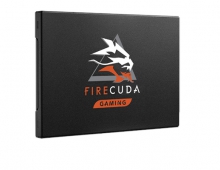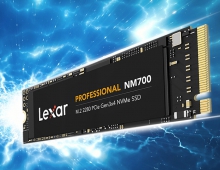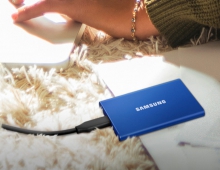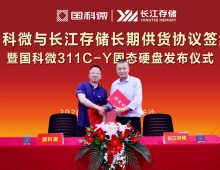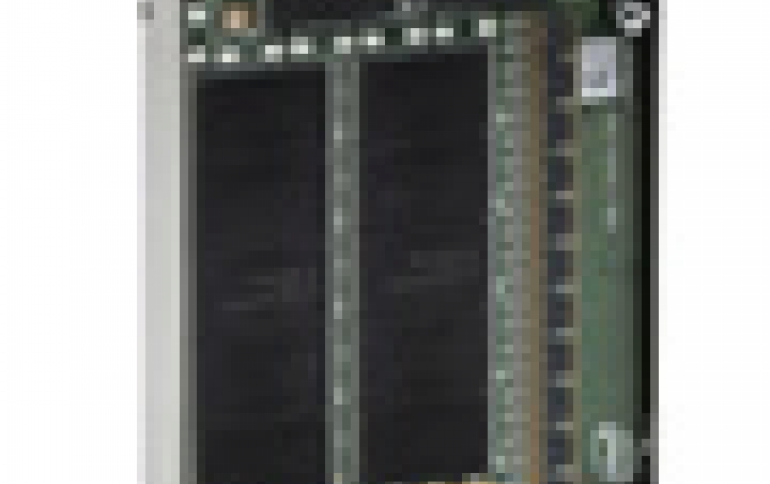
Hitachi Ships the 25nm SLC NAND Flash Enterprise-class SSDs
Hitachi Global Storage Technologies (Hitachi GST) today announced that its Ultrastar enterprise-class solid state drive (SSD) family, which are based on 25nm single-level cell (SLC) NAND flash.
The new Ultrastar SSD400S.B family is available in 100GB, 200GB and 400GB capacities, and features 2.5-inch 6Gb/s Serial Attached SCSI (SAS) interface.
 Working in collaboration with Intel, the Ultrastar SSD400S.B family combines enterprise-grade NAND flash, proprietary endurance firmware and power loss management techniques to extend the reliability, endurance and sustained performance of the new SSD family. According to Hitachi GST, the 400GB SSD can endure up to 35 petabytes (PB) of random writes over the life of the drive, which is the equivalent of writing 19.2TB/day for five years. The Ultrastar SSD400S family also includes advanced data integrity and power loss management technologies that are tied with industry standards to ensure compatibility in multi-tiered SSD/HDD system designs.
Working in collaboration with Intel, the Ultrastar SSD400S.B family combines enterprise-grade NAND flash, proprietary endurance firmware and power loss management techniques to extend the reliability, endurance and sustained performance of the new SSD family. According to Hitachi GST, the 400GB SSD can endure up to 35 petabytes (PB) of random writes over the life of the drive, which is the equivalent of writing 19.2TB/day for five years. The Ultrastar SSD400S family also includes advanced data integrity and power loss management technologies that are tied with industry standards to ensure compatibility in multi-tiered SSD/HDD system designs.
The new Ultrastar SSD400S.B family delivers a sequential throughput, up to 536MB/s read and 502MB/s write throughput with 6Gb/s SAS. The new drive also delivers up to 57,500 read and 25,500 sustained write IOPS, reaching speeds 100 times faster than traditional hard drives.
Hitachi's optional self-encrypting drives (SEDs) provide hardware-based data security and enhanced secure erase capability. Self-encrypting drives scramble data using a key as it is written to the disk, and then descramble it with the key as it is retrieved. It also speeds and simplifies the drive re-deployment process. By deleting the encryption key, the data is rendered unreadable, eliminating the need for time consuming data-overwrite. Further, system performance is improved because the encryption workload is moved off the processor and chipset and onto the drive.
Hitachi GST has already shipped and is currently qualifying its Ultrastar SSD400S.B drives with select OEMs. Broader qualification samples are now available with product ramp scheduled in 1H12. The Ultrastar SSD400S.B comes with or without an encryption option and is backed by a five-year limited warranty, or the maximum petabytes written (based on capacity).
Specifications
 Working in collaboration with Intel, the Ultrastar SSD400S.B family combines enterprise-grade NAND flash, proprietary endurance firmware and power loss management techniques to extend the reliability, endurance and sustained performance of the new SSD family. According to Hitachi GST, the 400GB SSD can endure up to 35 petabytes (PB) of random writes over the life of the drive, which is the equivalent of writing 19.2TB/day for five years. The Ultrastar SSD400S family also includes advanced data integrity and power loss management technologies that are tied with industry standards to ensure compatibility in multi-tiered SSD/HDD system designs.
Working in collaboration with Intel, the Ultrastar SSD400S.B family combines enterprise-grade NAND flash, proprietary endurance firmware and power loss management techniques to extend the reliability, endurance and sustained performance of the new SSD family. According to Hitachi GST, the 400GB SSD can endure up to 35 petabytes (PB) of random writes over the life of the drive, which is the equivalent of writing 19.2TB/day for five years. The Ultrastar SSD400S family also includes advanced data integrity and power loss management technologies that are tied with industry standards to ensure compatibility in multi-tiered SSD/HDD system designs.
The new Ultrastar SSD400S.B family delivers a sequential throughput, up to 536MB/s read and 502MB/s write throughput with 6Gb/s SAS. The new drive also delivers up to 57,500 read and 25,500 sustained write IOPS, reaching speeds 100 times faster than traditional hard drives.
Hitachi's optional self-encrypting drives (SEDs) provide hardware-based data security and enhanced secure erase capability. Self-encrypting drives scramble data using a key as it is written to the disk, and then descramble it with the key as it is retrieved. It also speeds and simplifies the drive re-deployment process. By deleting the encryption key, the data is rendered unreadable, eliminating the need for time consuming data-overwrite. Further, system performance is improved because the encryption workload is moved off the processor and chipset and onto the drive.
Hitachi GST has already shipped and is currently qualifying its Ultrastar SSD400S.B drives with select OEMs. Broader qualification samples are now available with product ramp scheduled in 1H12. The Ultrastar SSD400S.B comes with or without an encryption option and is backed by a five-year limited warranty, or the maximum petabytes written (based on capacity).
Specifications
| Model(s) | HUSSL4040BSS600 HUSSL4040BSS601 HUSSL4020BSS600 HUSSL4020BSS601 HUSSL4010BSS600 HUSSL4010BSS601 |
||
| Interface | SAS 6Gb/s | ||
| Capacity (GB) | 400/200/100 |
||
| Form Factor | 2.5 | ||
| Flash Memory Technology | Single-level cell (SLC) | ||
| Performance | |||
| Read Throughput (max MB/s, sequential 64K) |
536 | ||
| Write Throughput (max MB/s, sequential 64K) |
502 | ||
| Read IOPS (max IOPS, random 4K) | 57,500 | ||
| Write IOPS (max IOPS, random 4K) | 25,500 | ||
| Reliability | |||
| Error Rate (non-recoverable, bits read) | 1 in 1016 | ||
| MTBF (M hours) | 2.0 | ||
| Availability (hrs/day x days/wk) | 24x7 | ||
| Endurance (max PB, random write) | 35/18/9 | ||
| Power | |||
| Requirement | +5 VDC (+/-5%) +12 VDC (+/-5%) |
||
| Dissipation: Active Idle (W, Avg) | 1.7 | ||
| Operating (W, typical) | 5.5 | ||
| Power consumption efficiency (IOPS/Watt) | 8,360 | ||
| Physical size | |||
| Z-height (mm) | 15 | ||
| Dimensions (width x depth, mm) | 70.1 x 100.6 | ||
| Weight (g, max) | 222 | ||
| Environmental (operating) | |||
| Ambient temperature | 0 to 60ºC | ||
| Shock (half-sine wave) | 1000G (0.5ms) 500G (2ms) |
||
| Vibration | 2.16 G RMS, random, all axes 7 to 700 Hz |
||
| Environmental (non-operating) | |||
| Ambient temperature | -55 to 95ºC | ||
| Shock (half-sine wave) | 1000G (0.5ms) 500G (2ms) 100G (11ms) |
||
| Vibration | 3.13 G RMS, random, all axes 5 to 800 Hz | ||




